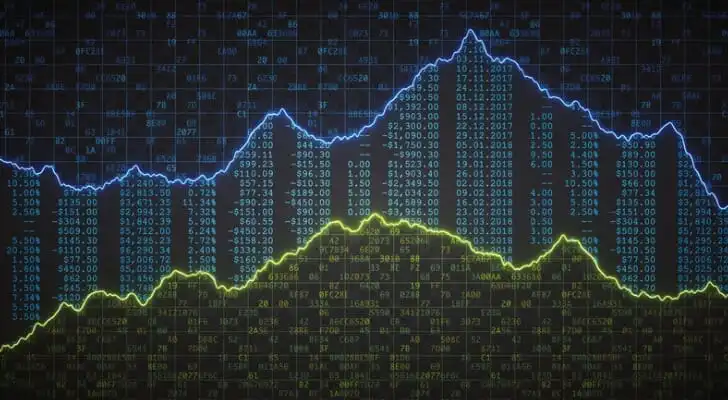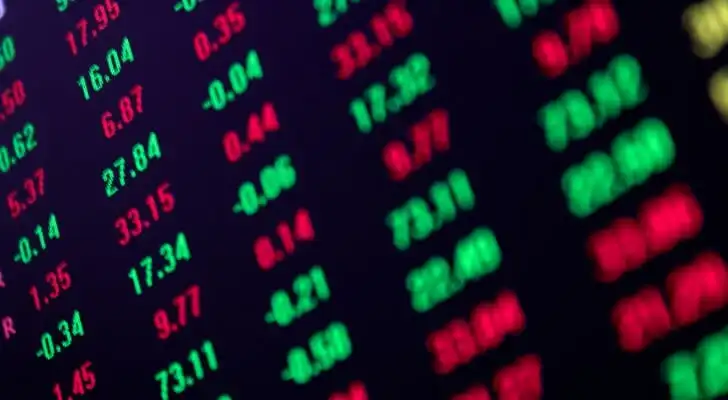 There are many different strategies for managing an investment portfolio But did you know you can automate trades within that portfolio? Algorithmic trading automatically places stock orders based on price and other conditions. Here are the basics of this method, how it works, its pros and cons, and when to use it.
There are many different strategies for managing an investment portfolio But did you know you can automate trades within that portfolio? Algorithmic trading automatically places stock orders based on price and other conditions. Here are the basics of this method, how it works, its pros and cons, and when to use it.
Algorithmic Trading: The Basics
An algorithm is a procedure by which one solves a problem, usually mathematical. It usually requires following a certain number of steps for solving said problem. Also, it typically involves repetition.
Similarly, algorithmic trading, also called algo-trading, is a computer program that trades stocks by following specific steps in a specific order. In short, it trades stocks through computer automation. Above all, it seeks the highest possible returns on a trade in the most efficient manner.
Also referred to as automated trading or black-box trading, algorithmic trading uses several market variables in its algorithm. These variables include price, time, and volume.
History of Algorithmic Trading
Algorithms entered the U.S. financial world with computerized trading systems during the 1970s. The New York Stock Exchange took the biggest step in 1976 when it introduced the Designated Order Turnaround (DOT) system. That system sent orders from traders to right to data specialists on the exchange floor. Within the last decade, automated trades accounted for more than 60% of all trades.
How It Works
 In algorithmic trading, traders utilize a computer program to set defined requirements for trade. For example, it can buy 100 shares when a specified number of shares moves below a predetermined price. Similarly, it can sell 100 shares when it moves above a certain price threshold.
In algorithmic trading, traders utilize a computer program to set defined requirements for trade. For example, it can buy 100 shares when a specified number of shares moves below a predetermined price. Similarly, it can sell 100 shares when it moves above a certain price threshold.
The program then monitors the share price. Once it meets those criteria, the computer automatically acts according to pre-programmed buy or sell orders. With algorithmic trading, there’s no need for a trader to manually make the trades.
Pros and Cons of Algorithmic Trading
Algorithmic trading can be a powerful trading tool. As a result, the modern financial world uses it for several reasons. First, it makes it possible to enact trades at a much higher speed and accuracy than trades made manually. Trades occur almost instantly, lowering the change of price fluctuations between a trader’s decision and actual trade.
There’s also a lower chance of human error than when a human trader makes trades. Meanwhile, automated trades often have lower fees with no human traders involved.
But this method of trading isn’t without its downfalls. For one, while the automated systems on which algorithmic trading can streamline trades, making them more accurate and efficient, there’s also the chance that these systems can fail. This could cause an investor to miss out on a potential investment opportunity. Having a human advisor monitor trades is often a wise move. It can ensure trades occur as specified.
This method of trading doesn’t take into account the emotional aspect of trading. While this initially may seem like a good thing. After all, who hasn’t made a trade based solely on emotional or anecdotal experience only to have it tank? But algorithms can only take you so far, and in some cases, what works, in theory, may not translate well into the market for a myriad of reasons. Think market volatility, inherent risk, and the like.
Using Algorithmic Trading
Today’s financial markets use algorithmic trading in broad applications. It often pairs with high-frequency trading, which makes a large number of trades at a high speed across various market sectors.
Artificial intelligence has created deep learning algorithms that seek out more profitable trades. As a result traders and programmers are teaming up on algorithms that become more profitable on their own.
Institutional investors and larger brokerages use algo trading, but so do mutual funds, pensions, and other large-scale investment vehicles. However, hedge funds ask amateur programmers to write algorithms, paying them commissions for highly profitable code. High-speed internet and fast, cheap computers have made algo trading a favorite among day traders.
The Bottom Line
 Ideally, algorithmic trading can achieve both returns and trading speed that a human trader can’t. For that reason, it is a cornerstone of the modern financial world. However, this method is not without its downsides, from over-automation to failure to take into account real market conditions.
Ideally, algorithmic trading can achieve both returns and trading speed that a human trader can’t. For that reason, it is a cornerstone of the modern financial world. However, this method is not without its downsides, from over-automation to failure to take into account real market conditions.
Investing Tips
- If you’re not sure how algorithmic trading fits into your portfolio, a financial advisor may be able to help. Finding a financial advisor doesn’t have to be hard. SmartAsset’s free tool matches you with up to three vetted financial advisors who serve your area, and you can interview your advisor matches at no cost to decide which one is right for you. If you’re ready to find an advisor who can help you achieve your financial goals, get started now.
- If you can trade stocks without human help, can you get financial advice that way as well? A robo-advisor can help you with certain decisions, but it isn’t right for everyone. Consider the pros and cons of a robo-advisor before seeking one out.
- Do you know your investment risk tolerance? How will your investments grow over a certain amount of time? What will taxes and inflation take out of the equation? Before you go automating your investment strategy, consider consulting SmartAsset’s investing guide for answers to your most basic questions..
Photo credit: ©iStock.com/nd3000, ©iStock.com/matejmo, ©iStock.com/bingfengwu